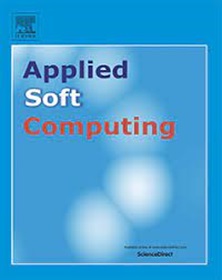基于交换的供应链销售数据预测方法
IF 7.2
1区 计算机科学
Q1 COMPUTER SCIENCE, ARTIFICIAL INTELLIGENCE
引用次数: 0
摘要
对于供应链从业人员来说,预测未来需求一直是一项极具挑战性的任务,而最近的大流行病又进一步加剧了这一挑战。虽然文献表明,与基于概率分布的传统预测方法相比,ML/AI 方法有可能提高准确性,但这种提高的程度可能因具体情况而异。人们认识到,传统的概率预测方法通常被认为准确性较低,可能会导致误差,从而对整体业务成本的估算产生潜在影响。与此同时,随着人工智能(AI)方法(如机器学习(ML)和深度学习(DL))的发展,通过历史数据更准确地预测需求,可以减少对成本的错误估计。因此,本文采用了几种基于人工智能的方法来预测需求数据。由于没有一种固定的人工智能方法最适用于所有数据集,因此本文提出了一种基于切换的预测方法(SBFA),以利用不同高级 ML/DL 方法的优点,提前不同天数进行预测。根据验证数据的表现,拟议系统会自动在不同方法之间切换,以确定更合适的预测方法。我们开发了一个具有不同属性的双供应链模型,以对照几种传统预测方法来验证所提出的 SBFA。该供应链模型的再订货点是根据传统/ML/DL 预测方法的预测结果计算得出的。通过计算整体供应链成本,分析了 SBFA 和其他方法的预测结果。根据静态和动态前置时间设置下的整体供应链成本,证明了所提出的 SBFA 与传统预测方法相比的有效性和适用性。本文章由计算机程序翻译,如有差异,请以英文原文为准。
A switching based forecasting approach for forecasting sales data in supply chains
Forecasting future demand has been a challenging task for supply chain practitioners, which is further exacerbated due to the recent pandemic effects. While the literature suggests a potential for improved accuracy with ML/AI approaches compared to probabilistic distribution-based traditional forecasting methods, the extent of this enhancement may vary based on the specific case. It is recognized that traditional probabilistic forecasting approaches are often considered less accurate and may lead to errors, potentially influencing the estimation of overall business costs. Meanwhile, with the advancement of artificial intelligence (AI) approaches, such as machine learning (ML) and deep learning (DL), this misestimation of cost can be reduced by forecasting demand more accurately from historical data. Consequently, this paper applies several AI-based approaches to predict demand data. Since no fixed AI approach works best for all datasets, a switching-based forecasting approach (SBFA) is proposed to exploit the merit of different advanced ML/DL approaches for different days ahead of prediction. Based on the performance of validation data, the proposed system automatically switches between different approaches to determine a more appropriate forecasting approach. A two-echelon supply chain model with different attributes is developed to validate the proposed SBFA against a few traditional forecasting approaches. The reorder points of this supply chain model are calculated based on the predictions from conventional/ML/DL forecasting approaches. Predictions from SBFA and other approaches are analysed by calculating overall supply chain cost. Based on overall supply chain costs under static and dynamic lead time settings, the effectiveness and applicability of the proposed SBFA against traditional forecasting approaches are demonstrated.
求助全文
通过发布文献求助,成功后即可免费获取论文全文。
去求助
来源期刊

Applied Soft Computing
工程技术-计算机:跨学科应用
CiteScore
15.80
自引率
6.90%
发文量
874
审稿时长
10.9 months
期刊介绍:
Applied Soft Computing is an international journal promoting an integrated view of soft computing to solve real life problems.The focus is to publish the highest quality research in application and convergence of the areas of Fuzzy Logic, Neural Networks, Evolutionary Computing, Rough Sets and other similar techniques to address real world complexities.
Applied Soft Computing is a rolling publication: articles are published as soon as the editor-in-chief has accepted them. Therefore, the web site will continuously be updated with new articles and the publication time will be short.
 求助内容:
求助内容: 应助结果提醒方式:
应助结果提醒方式:


